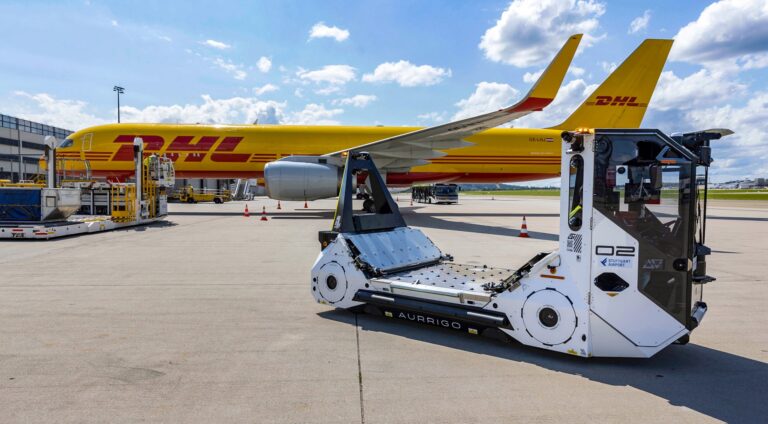Aurrigo International’s Auto-DollyTug has been successfully deployed at Stuttgart Airport, as part of the Digital Testbed Air Cargo (DTAC) Demonstration, led by the Frankfurt University of Applied Sciences in collaboration with the Fraunhofer Institute for Material Flow and Logistics (IML) and operational partners Flughafen Stuttgart, Fraport and Sovereign Speed.
The ongoing testing – attended by Oliver Luksic, parliamentary state secretary of the federal minister of digital and transport – provided a glimpse into the future of air cargo handling and how it can be optimized by using autonomous equipment.
Held on the apron of Stuttgart Airport, the demonstration included a host of features, such as autonomous transportation of cargo containers to the aircraft position; autonomous recognition of the loading device (high loader) at the aircraft position and cargo handover; collaborative behavior in mixed traffic with manual vehicles and pedestrians, including yielding right of way; and reliable detection of static and dynamic obstacles.
“Our ability to lead the world in this autonomous technology has come from successful collaborations with a host of international partners,” commented professor David Keene, CEO of Aurrigo. “The Digital Testbed Air Cargo Demonstration is the latest one and we’re delighted to have successfully showcased the difference Auto-DollyTug can make at busy airports like Stuttgart. “To have Mr Luksic on-site to see the test firsthand was a massive honor, and the feedback we received for our pioneering innovation was extremely positive.”
“The demonstration of the autonomous vehicle at Stuttgart Airport clearly shows that the Digital Testbed Air Cargo makes a direct contribution to the advancement of freight handling on the airfield,” added Luksic. “The use of autonomous vehicles can make processes more efficient and safer. This is a crucial step toward a digital and interconnected air freight transport chain.” Auto-DollyTug, which is now set to be deployed at six global airports, introduces pioneering features that elevate efficiencies beyond the capabilities of today’s standard aviation tow tractors.
Benjamin Bierwirth, professor for controlling and logistics at Frankfurt University of Applied Sciences, concluded, “The demonstration impressively shows the progress in autonomous vehicles in the aviation sector. Even demanding tasks can be taken over, thus relieving personnel of time-consuming tasks. I expect these vehicles to be in continuous operational use at major airports within the next five years.
“The tests demonstrate how autonomous vehicles can efficiently and precisely handle the transport of cargo containers, making handling more predictable and resilient even in times of skilled labor shortages. This marks a significant advancement in the industry and offers a promising outlook on the future of air cargo logistics.”
A patented sideways drive system enables the autonomous tractor to maneuver directly sideways into confined spaces within the baggage hall and amidst ground service equipment on the apron. Additionally, its 360° tank turn capabilities and integrated robotic arms enable the vehicle to automatically load and unload unit load devices with precision, streamlining operations.

